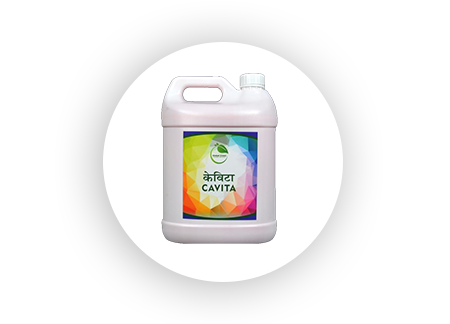
Cavita is an advanced formulation of calcium and phosphorous both are in gluconated form. As per the studies of agricultural dept. of India,in year 2017-2018 and 2018-2019 75% of farming crops are calcium deficient. Due to which it is more receptive to diseases and are becoming more weak and less productive.Calcium plays main role in nurturing of plant,fruits,flowers and grains.Each tissue is made up of calcium ,protein and strengthen by phosphorus.These are the key ingredient for making healthy tissues,healthy crop ,fruits and flowers. I
In agricultural market,calcium is available in nitrate form ,chilated form in chloride form and also in oxide form individually. None of above said format is directly consumed by plants because it needs degradation .And none of them are absorbed through plant leaves.They will be absorbed through shoots,fruits and from root zone of the plant after degradation.
The main USP of Cavita is ,it is in gluconated form i.e,it is in form, in which plant actually stores it as food in themselves .Cavita is having combination of calcium ,phosphorus .These two ingredient are digested in plant body with the help of vitamins B6,B12 AND vitamin D3 and some supportive minerals like Zinc,Copper and Iron to boost its efficiency.And also having a support of two main ingredient those are shatavari extract and jaywanti extact which is having capacity to boost self healing power of plant and also reduces the ageing effect of plant.
Cavita can be absorbed through leaves of the plant as well as shoots,rootsof the plant.As Cavita has unique formulation,it will not get complexed while applying through soil and it can be easily be absorbed within 2 hours into the plant body and when Cavita is applied through foliar application,it will be absorbed within 1 hour into the plant body.
For 1 acre of land, 2to 2.5 litre of Cavita must be used and for foliar application 2to 2.5 ml per litre of water must be used.